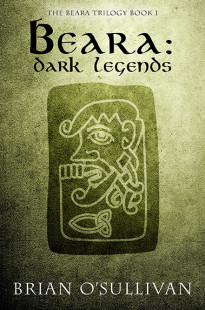
In European countries, when people talk of ‘clan’ (from the medieval Gaelic word ‘clann’) they’re basically using a more localised word for ‘tribe’. Both relate to a community or social grouping established from a common kinship or family tie although, over time, as the grouping grows larger, that definition can change. Most people believe the concept of a tribe has pretty much had its day in Ireland but if you look carefully you’ll still see remnants of it around in certain parts of the country.
The first clue is the link between family names and homeland location. Most Irish genealogists and social researchers are more than aware how closely aligned the two are in Ireland, not only in terms of country but in terms of townland as well. In Beara, for example, the old adage is that “you can’t throw a stone in the bush without hitting an O’Sullivan” and anyone who’s ever studied the shop names in Catletownbere knows that to be true.
Needless to say, that holds just as well for the Harringtons and, of course, the Murphys who, judging from their numbers and geographical spread, seem to have single-handedly dominated reproduction in Ireland for several centuries.
‘nuff said!
Living in New Zealand, I’ve been lucky enough to have the opportunity to compare the impact of colonization (the invasion of another country and the oppression of its native people/culture) on Maori tribal societies here with Gaelic tribal societies back home. This has been exceptionally useful when writing the Fionn series not only because Clan politics play an important part of the story but in terms of cultural authenticity – a key part of what I’m trying to do with Irish Imbas Books.
Unlike Ireland, where the undermining of Gaelic culture commenced in earnest from an early date (early 1600s), the colonization process in New Zealand didn’t truly kick in until the mid- to late-1800s. Even then, because of its relative isolation compared to the invading countries and its tough topography, the colonization process was never fully completed to the point that the Crown and associated business interests would probably have liked.
Although it was pretty much brought to the brink, Maori society has managed to retain/reclaim very strong elements of its culture as well as parts of its tribal structure. What’s fascinating to watch, though, is that with the legal power of the Treaty of Waitangi (the treaty signed between the English Crown and most tribes) and subsequent financial compensation (albeit minimal) for lands stolen and damage sustained, Maori communities are now, once again, re-establishing their tribal organisations. There are of course, major differences to the structures of 150-200 years ago but this is still something I’ve not seen anywhere else in the world (although I understand something similar may be occurring in Canada and the United States). I don’t think people here have truly understood the impact those changes are going to have (hopefully better – but who knows?) in society over the next ten to twenty years.
By studying the tribal dynamics here, I find that I can extrapolate quite a lot of the cultural subtleties to the Gaelic context, to work out how Irish (or rather, ‘Gaelic’) clan/tribal structures worked long ago – and, potentially – how they might work in the future. I’ll be covering that in more detail in my next blog article.



